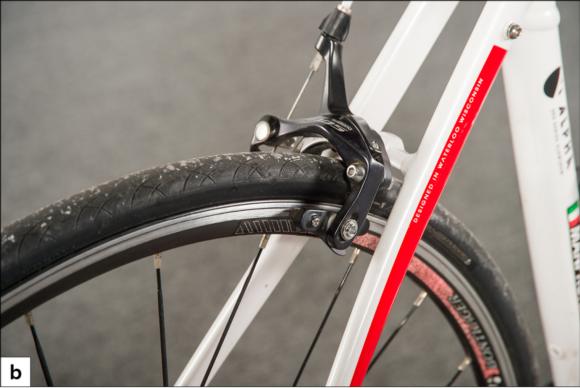Cycling safety as part of your triathlon experience
This is an excerpt from Train to Tri by Linda Cleveland,Kris Swarthout.
Cycling is traditionally the second portion of a race. It is the longest distance of the race, and it requires the most equipment of all the sports. We have already discussed most of the cycling gear you need in chapter 3, so the focus of this chapter is on cycling safety, skills, etiquette, and training. So grab your bike, helmet, and cycling shoes, and let's get riding!
Cycling Safety Awareness
Before you head out on the road to ride your bike, let's make sure you have everything you need to do so safely. Before every ride you should conduct a simple list of safety checks to ensure a safe, productive training ride. Your bike safety checklist should include the following items.
Bike
Before you ride, start by looking at the bike as a whole, giving it a visual once over before you focus specifically on designated areas. You may want to clean any dirty parts at this time. A simple glass cleaner can be used safely on most surfaces to remove dirt and bugs. We will talk about the greasy parts in just a bit.
Brakes
If we had to choose the most important working part of your bike, it would be the brakes. If your brakes don't work properly, your day is going to go sideways quickly. The best way to approach them is taking it step-by-step, as follows:
- Squeeze the brake levers (see figure 6.1a) to ensure that the cables are in good, working order. The brake handles should travel or squeeze the same distance in each hand. The cables should squeeze and release with ease and should not bind at any point.
- Look to see whether the brake calipers near the tires (see figure 6.1b) have functional movement, meaning that they open and close smoothly as you squeeze the brake levers.
- Give the wheels a spin to ensure that the brakes are not rubbing on the braking surfaces of the wheel rim. If rubbing occurs because your wheel rim is wobbly or out of true, we suggest you take your bike into your local bike shop for a tune-up. If only one pad is rubbing, you can usually move the brake caliper around so that is centered on the rim and not rubbing. If you can't keep the brake from rubbing, have your local bike shop fix this issue.
- Squeeze the brakes and push the bike forward to ensure that the brakes have the power to slow and stop you when required.


Brake components: (a) levers and (b) calipers.
Learn more about Train to Tri.
More Excerpts From Train to TriSHOP

Get the latest insights with regular newsletters, plus periodic product information and special insider offers.
JOIN NOW
Latest Posts
- Using double inclinometers to assess cervical flexion
- Trunk flexion manual muscle testing
- Using a goniometer to assess shoulder horizontal adduction
- Assessing shoulder flexion with manual muscle testing
- Sample mental health lesson plan of a skills-based approach
- Sample assessment worksheet for the skill of accessing valid and reliable resources


